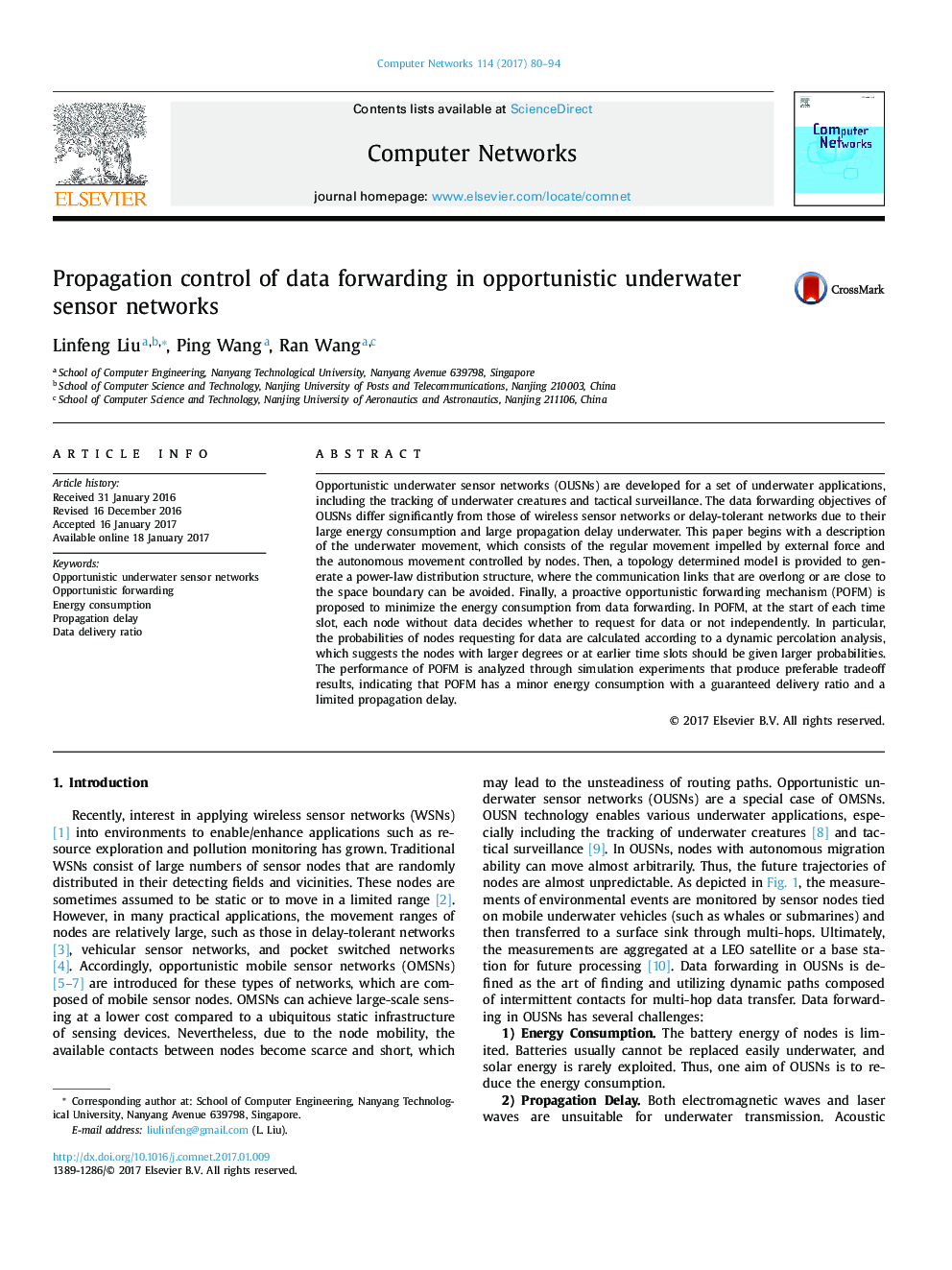| Article ID | Journal | Published Year | Pages | File Type |
|---|---|---|---|---|
| 4954764 | Computer Networks | 2017 | 15 Pages |
Abstract
Opportunistic underwater sensor networks (OUSNs) are developed for a set of underwater applications, including the tracking of underwater creatures and tactical surveillance. The data forwarding objectives of OUSNs differ significantly from those of wireless sensor networks or delay-tolerant networks due to their large energy consumption and large propagation delay underwater. This paper begins with a description of the underwater movement, which consists of the regular movement impelled by external force and the autonomous movement controlled by nodes. Then, a topology determined model is provided to generate a power-law distribution structure, where the communication links that are overlong or are close to the space boundary can be avoided. Finally, a proactive opportunistic forwarding mechanism (POFM) is proposed to minimize the energy consumption from data forwarding. In POFM, at the start of each time slot, each node without data decides whether to request for data or not independently. In particular, the probabilities of nodes requesting for data are calculated according to a dynamic percolation analysis, which suggests the nodes with larger degrees or at earlier time slots should be given larger probabilities. The performance of POFM is analyzed through simulation experiments that produce preferable tradeoff results, indicating that POFM has a minor energy consumption with a guaranteed delivery ratio and a limited propagation delay.
Related Topics
Physical Sciences and Engineering
Computer Science
Computer Networks and Communications
Authors
Linfeng Liu, Ping Wang, Ran Wang,
